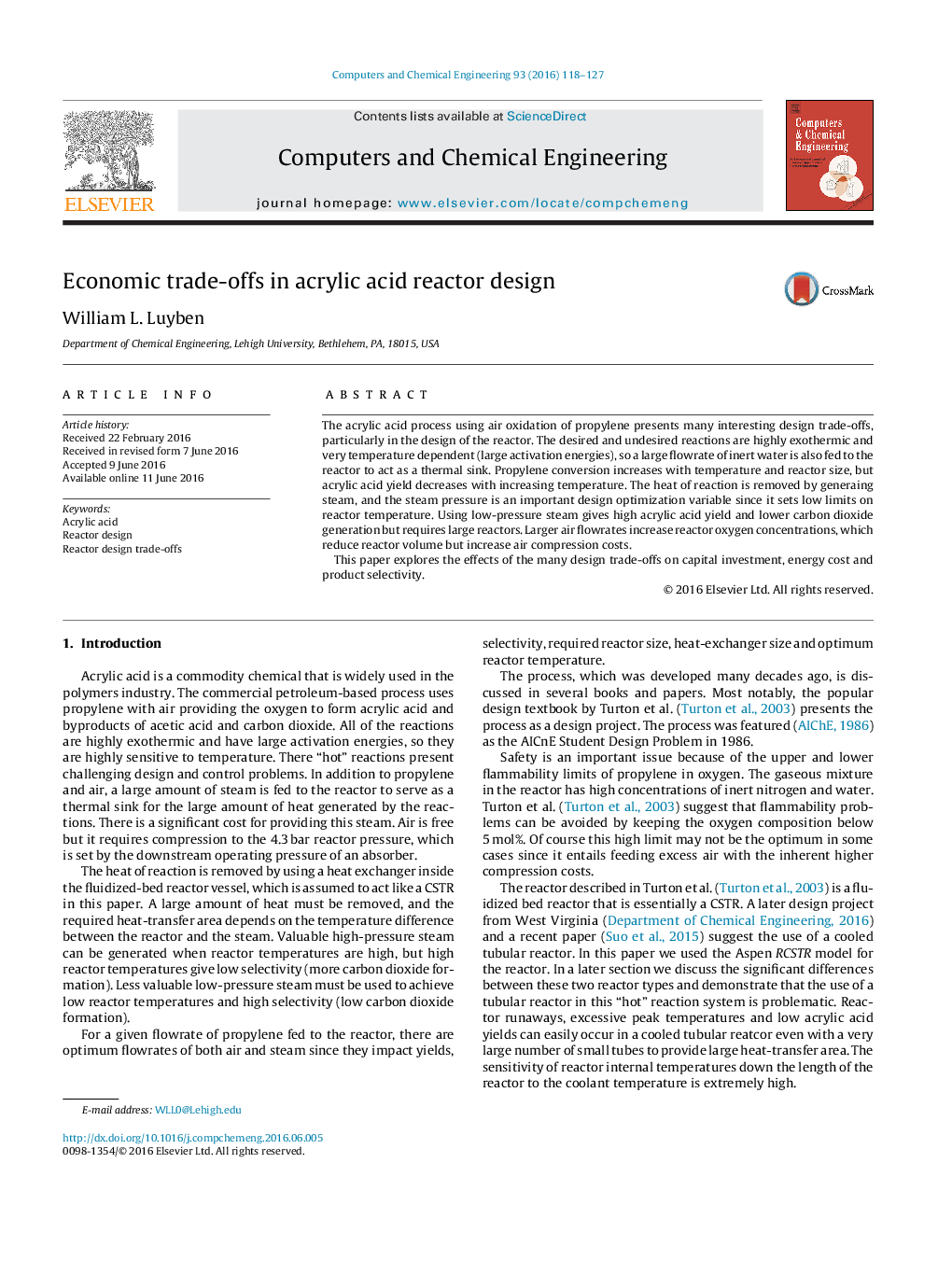| Article ID | Journal | Published Year | Pages | File Type |
|---|---|---|---|---|
| 171983 | Computers & Chemical Engineering | 2016 | 10 Pages |
•The acrylic acid reactor should operate at low temperatures to improve selectivity.•Steam and air feed flowrate should be set at coke-formation and flammability constraints, respectively.•Dynamic control performance of the acrylic acid CSTR is excellent because high conversion prevents temperature runaway.
The acrylic acid process using air oxidation of propylene presents many interesting design trade-offs, particularly in the design of the reactor. The desired and undesired reactions are highly exothermic and very temperature dependent (large activation energies), so a large flowrate of inert water is also fed to the reactor to act as a thermal sink. Propylene conversion increases with temperature and reactor size, but acrylic acid yield decreases with increasing temperature. The heat of reaction is removed by generaing steam, and the steam pressure is an important design optimization variable since it sets low limits on reactor temperature. Using low-pressure steam gives high acrylic acid yield and lower carbon dioxide generation but requires large reactors. Larger air flowrates increase reactor oxygen concentrations, which reduce reactor volume but increase air compression costs.This paper explores the effects of the many design trade-offs on capital investment, energy cost and product selectivity.
